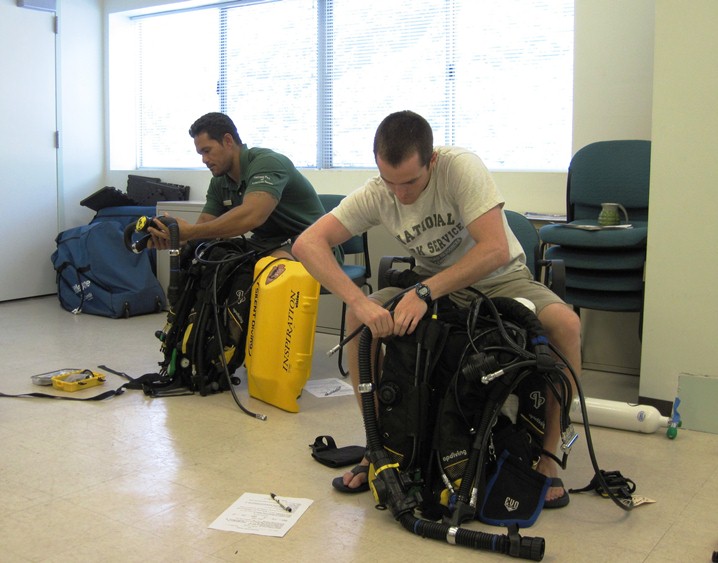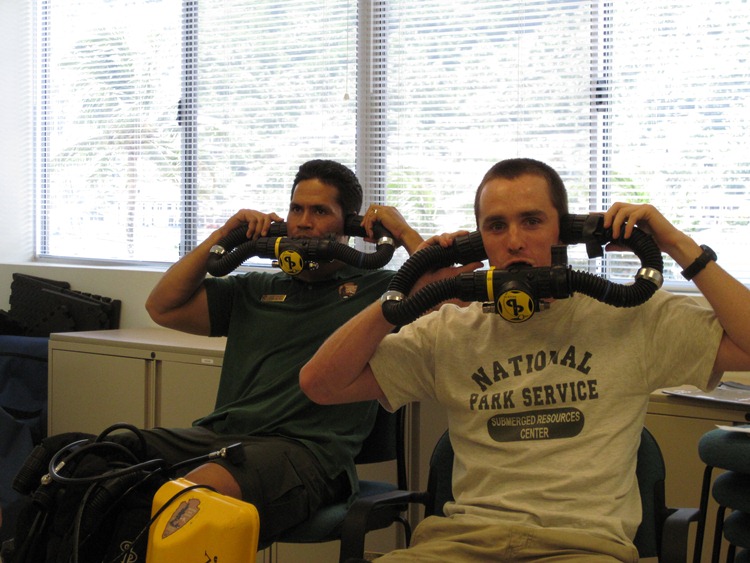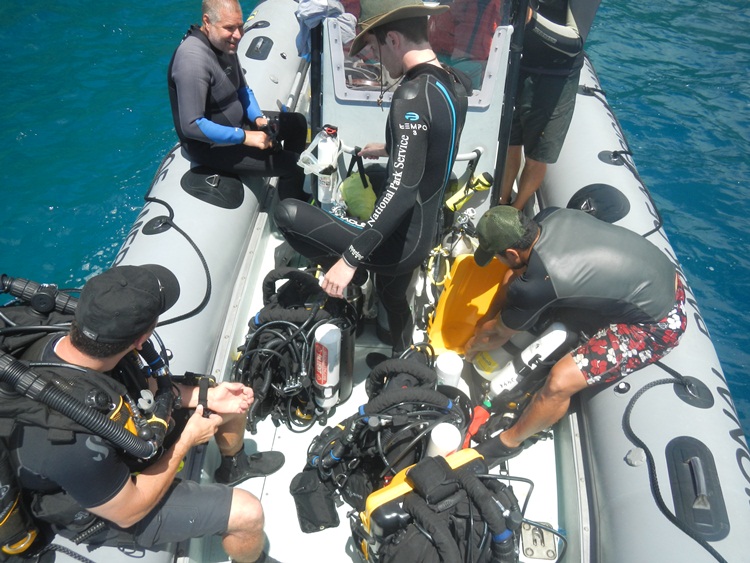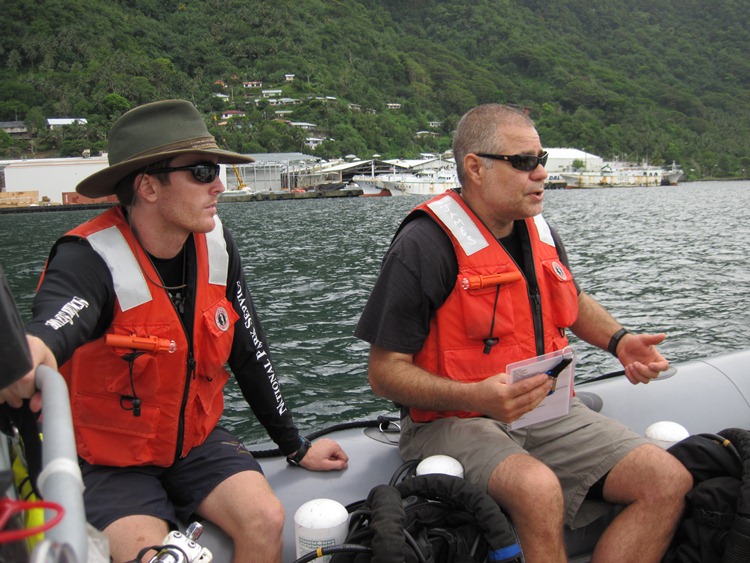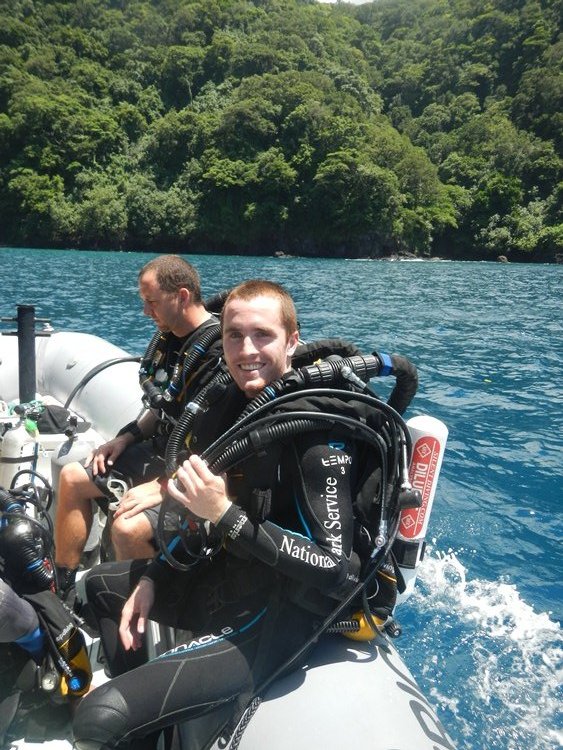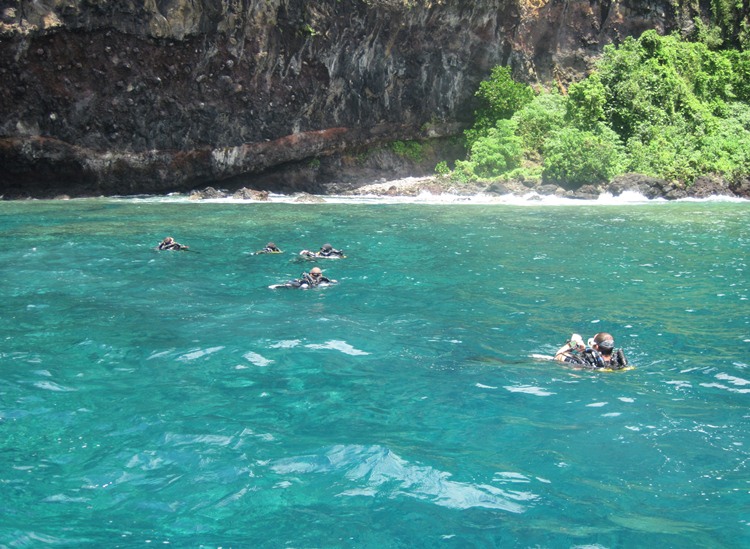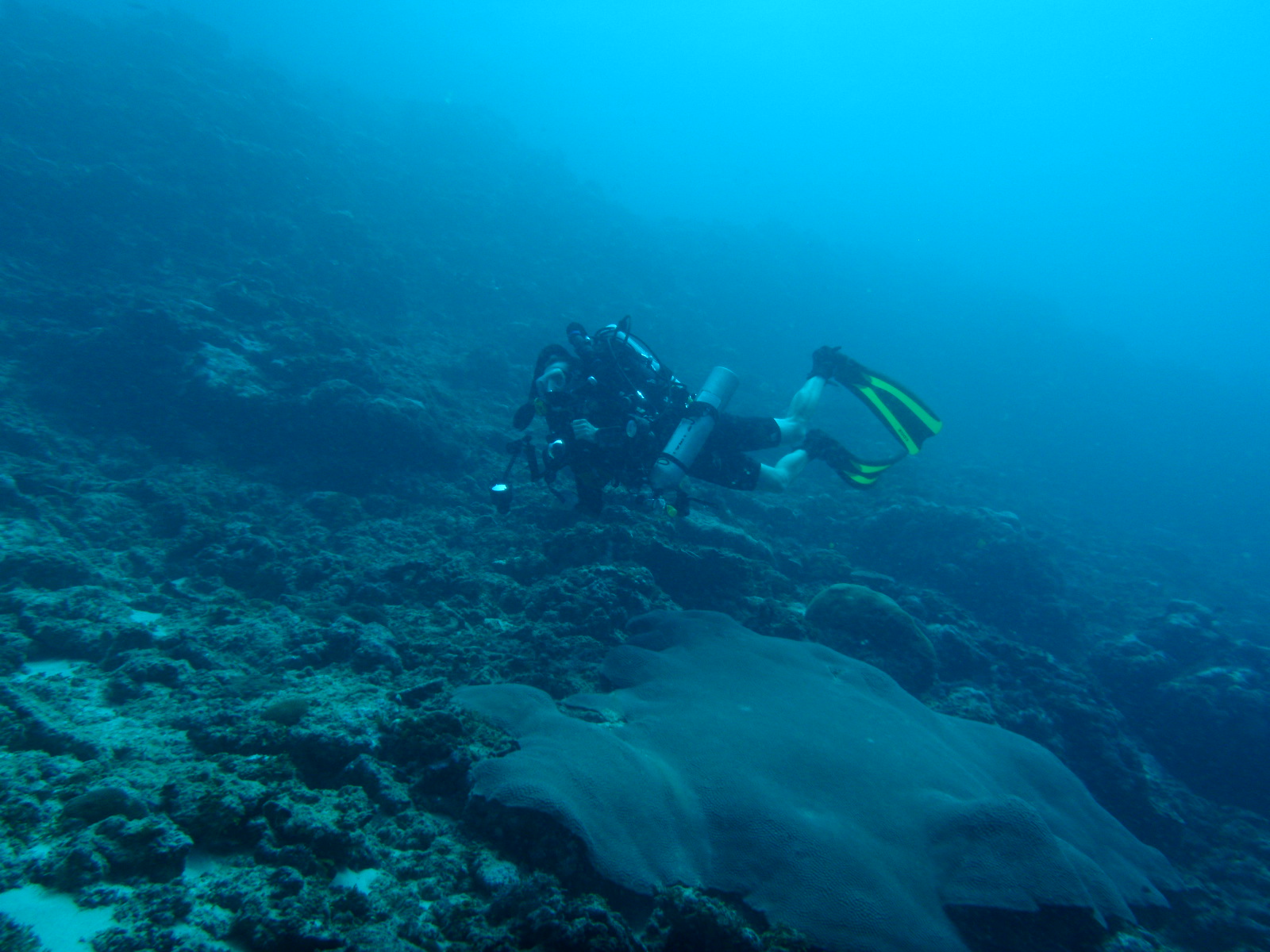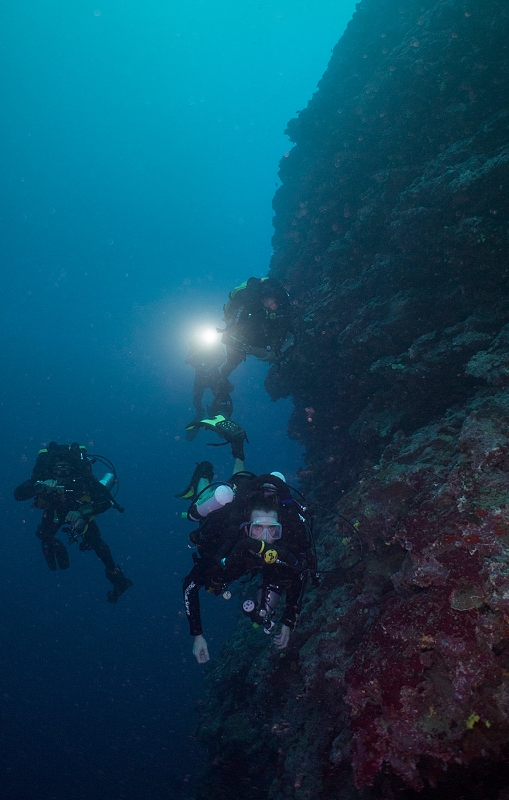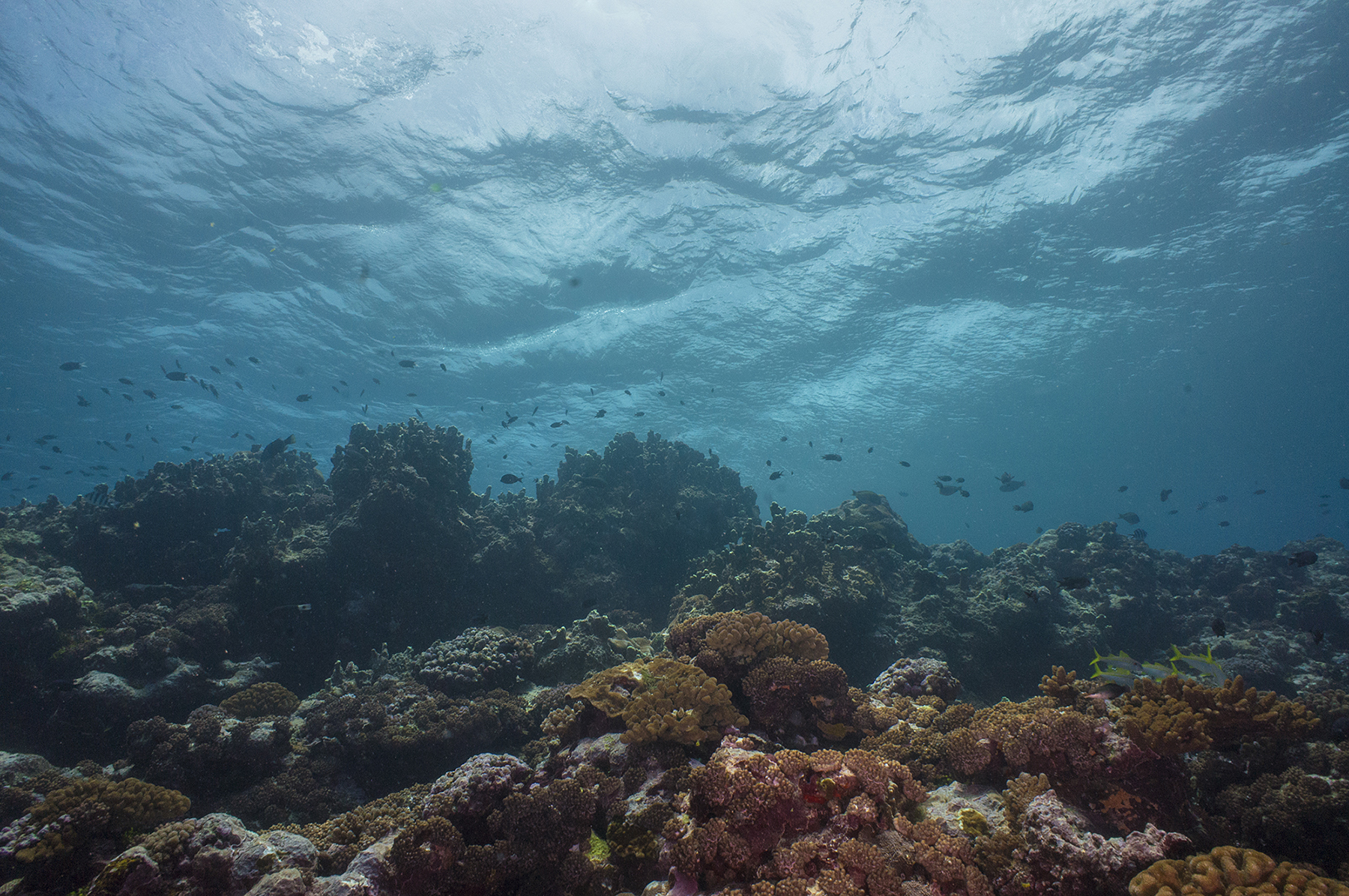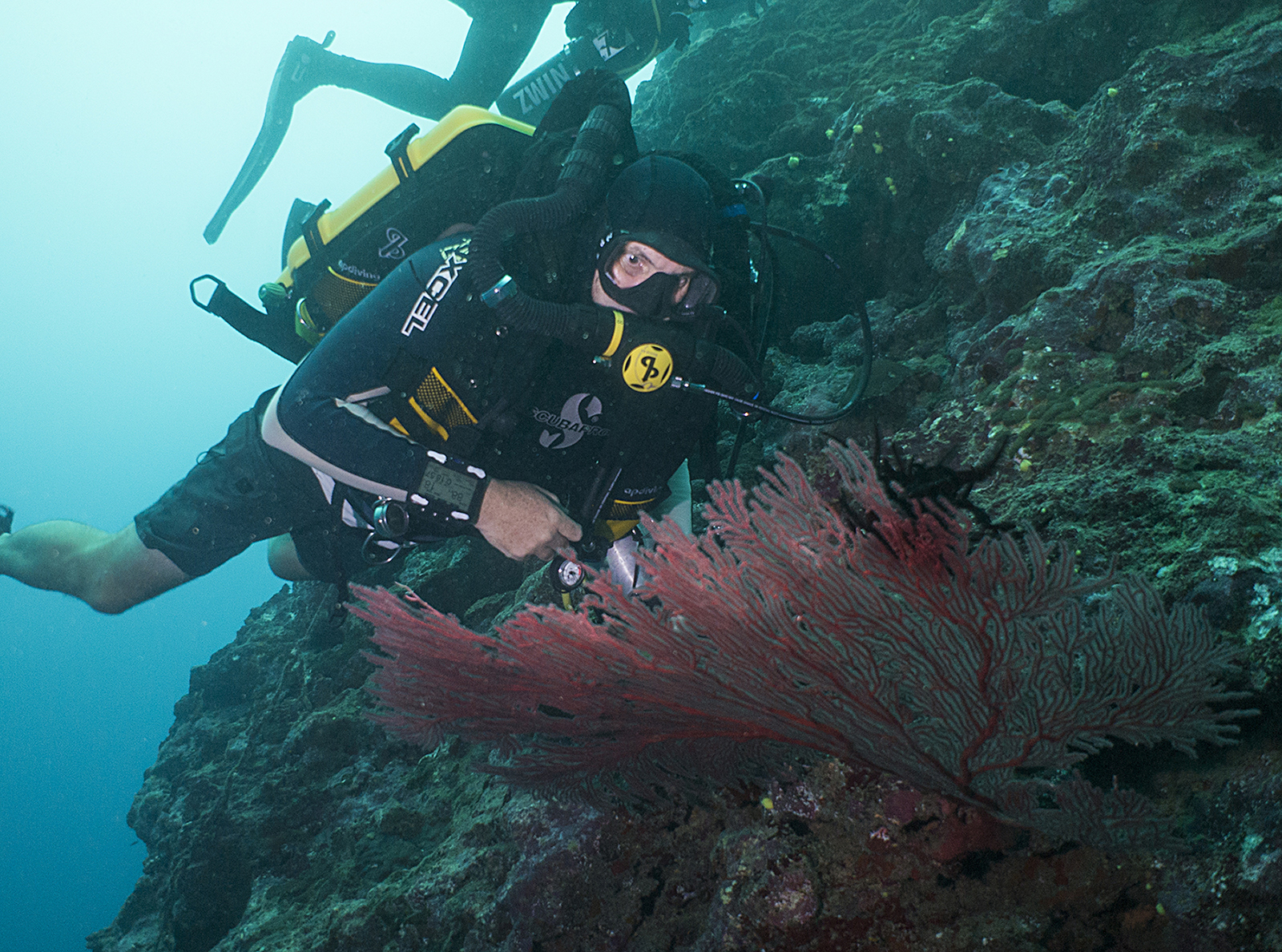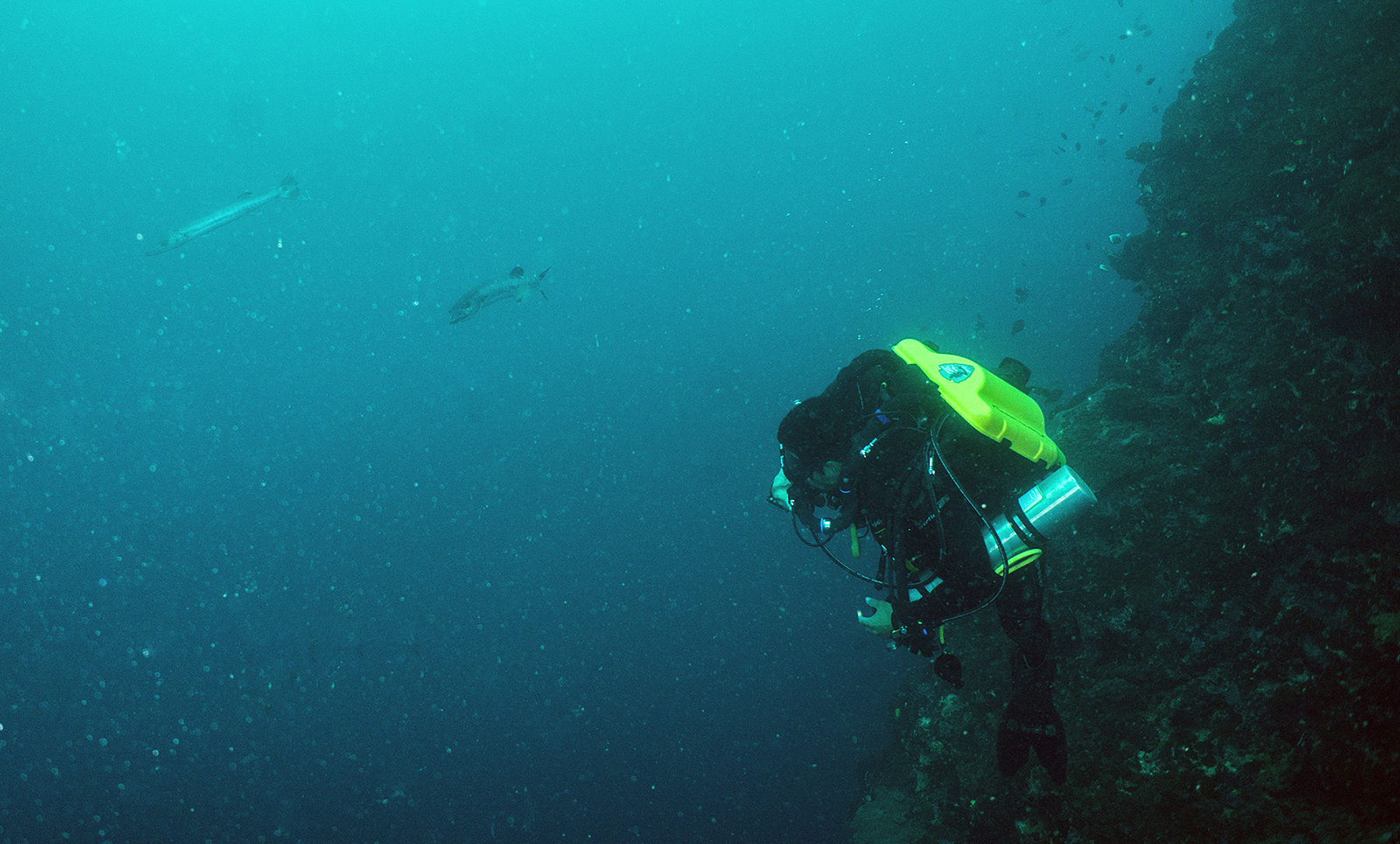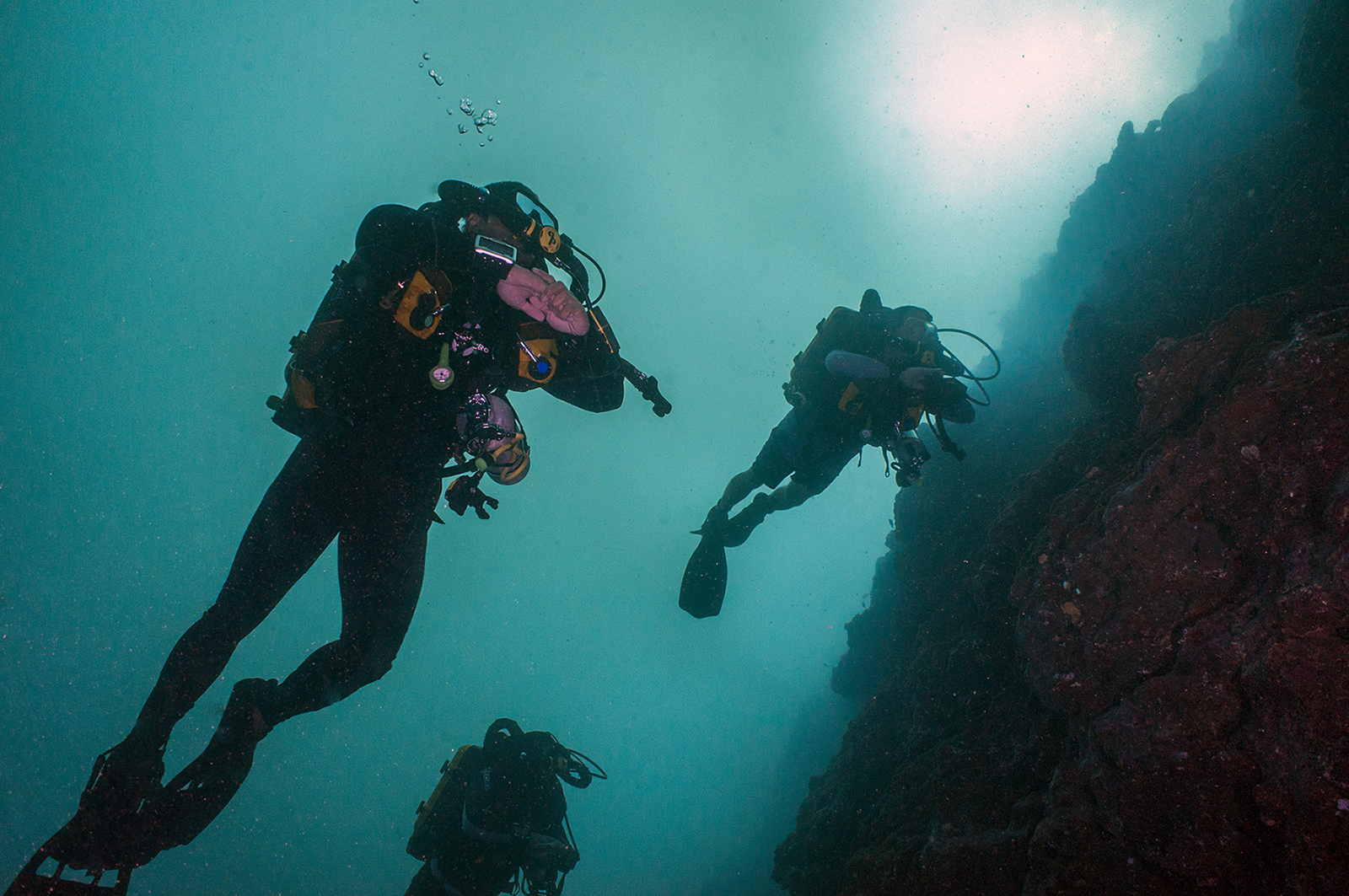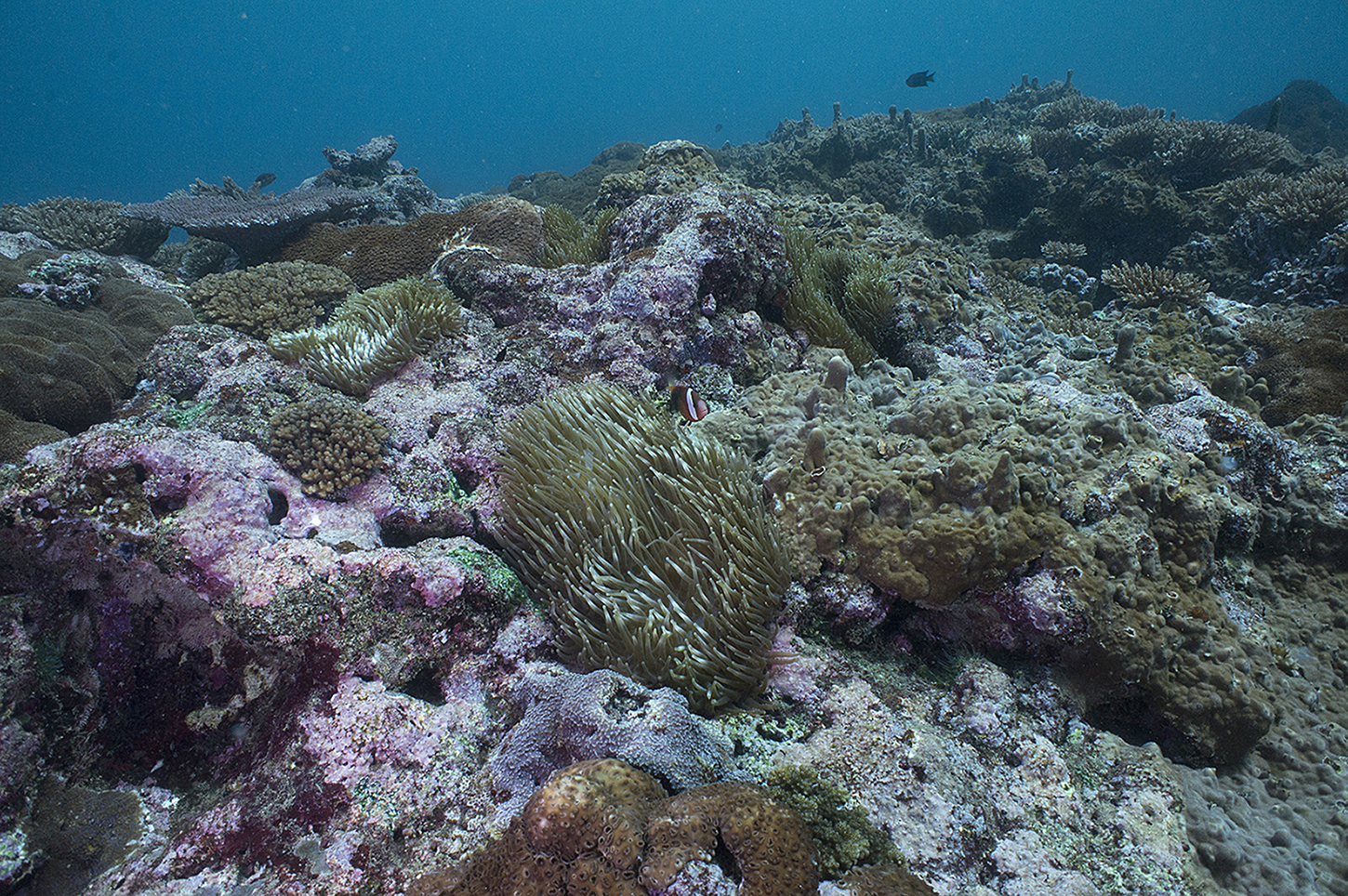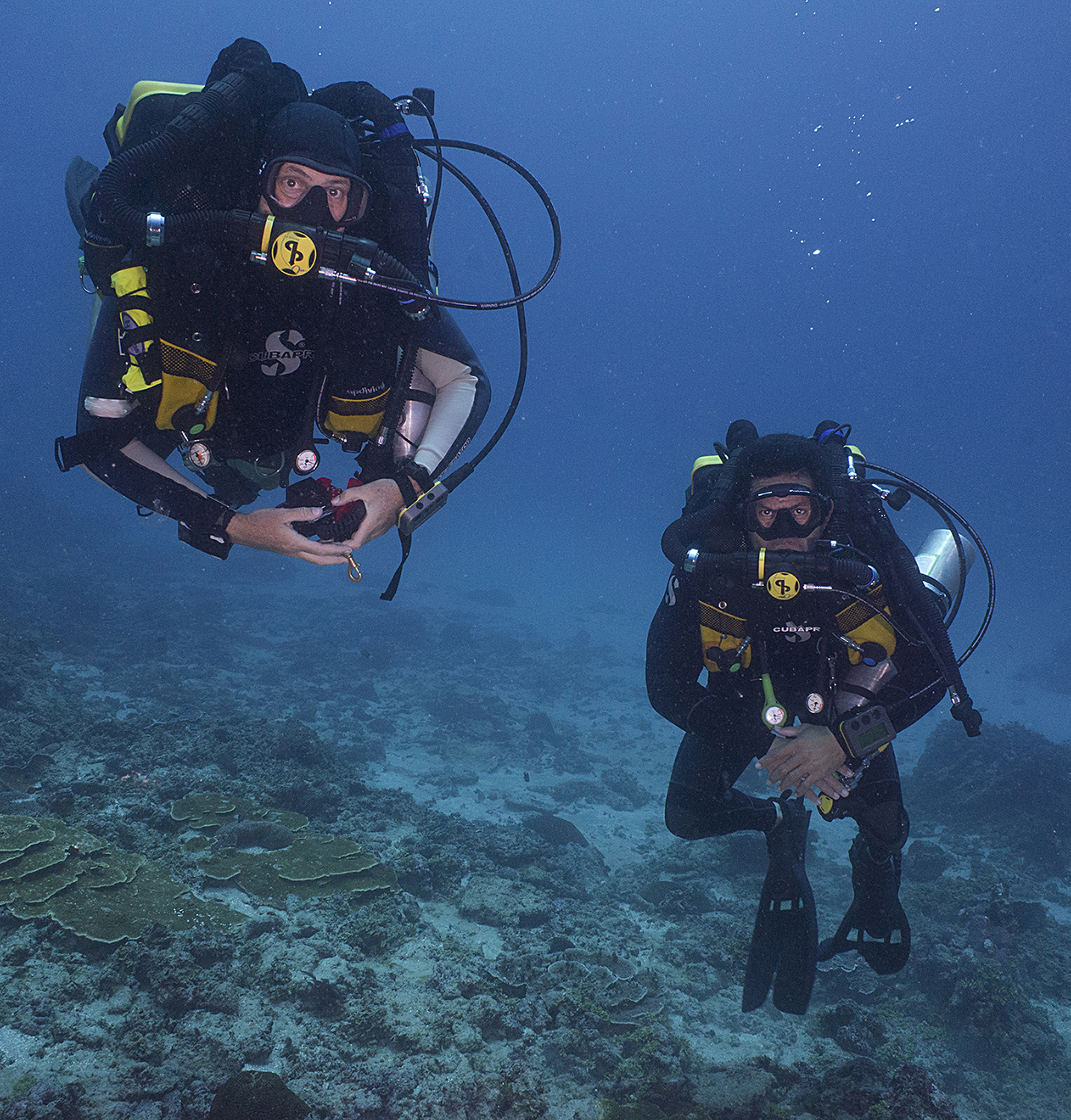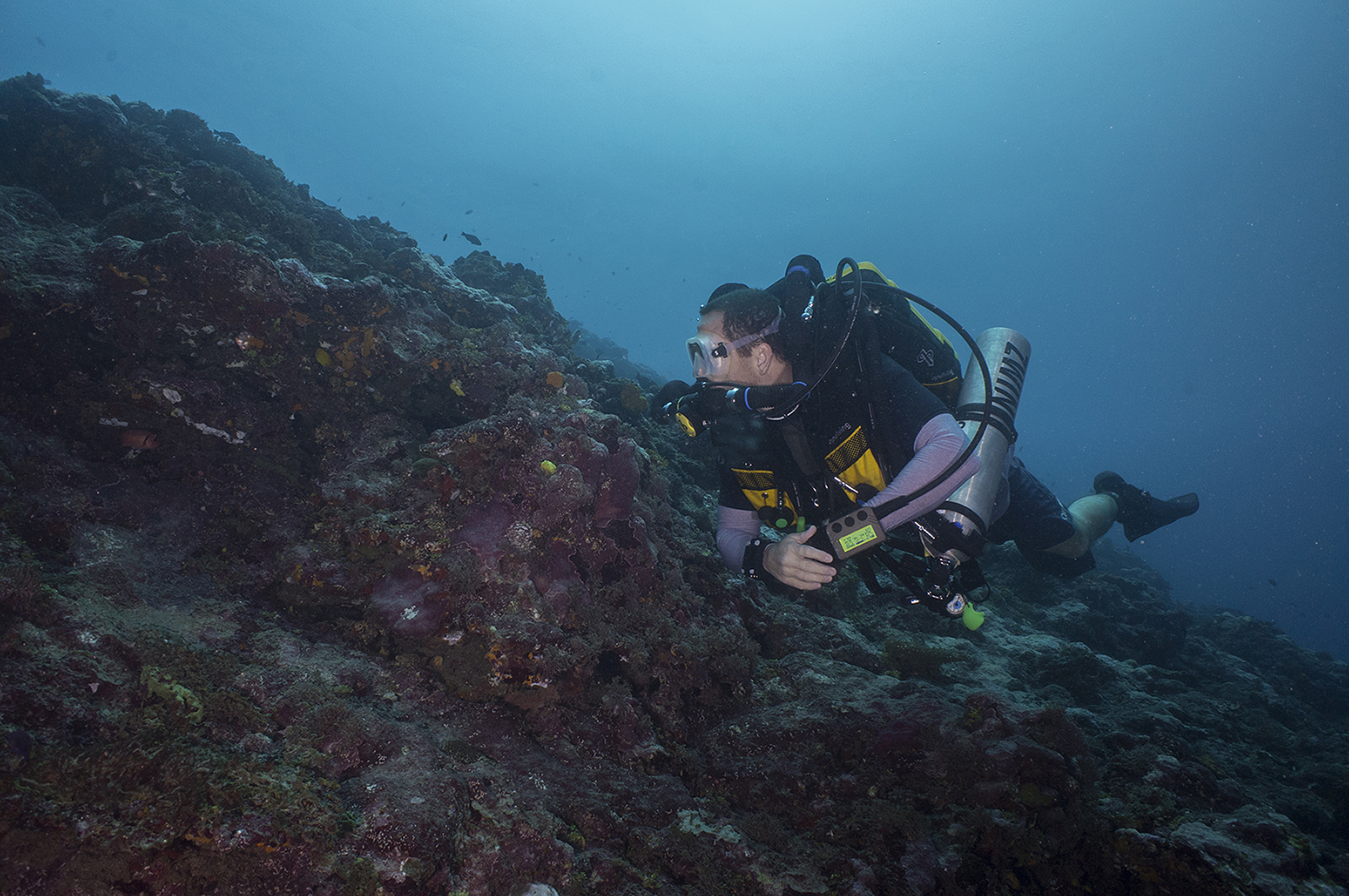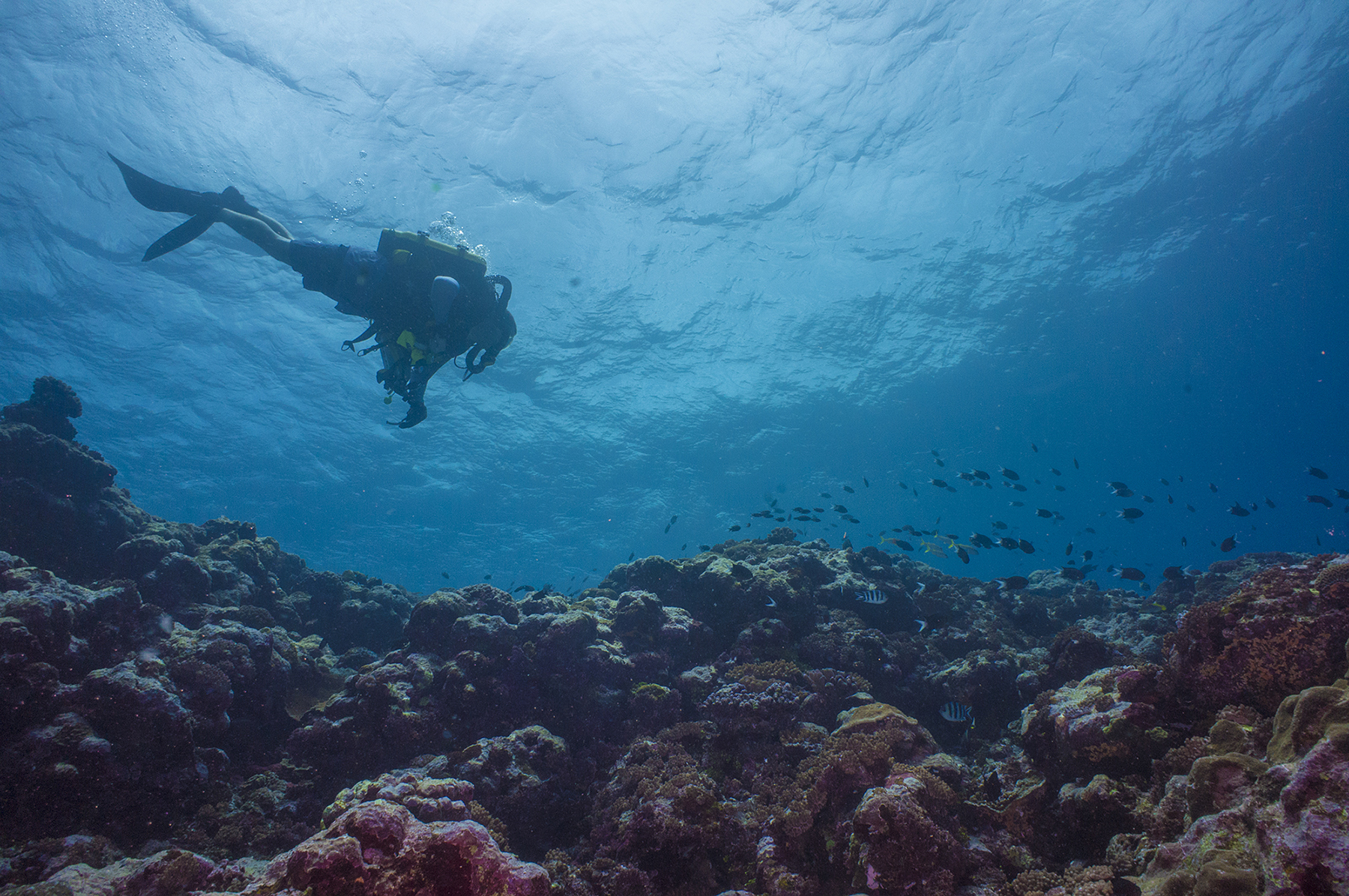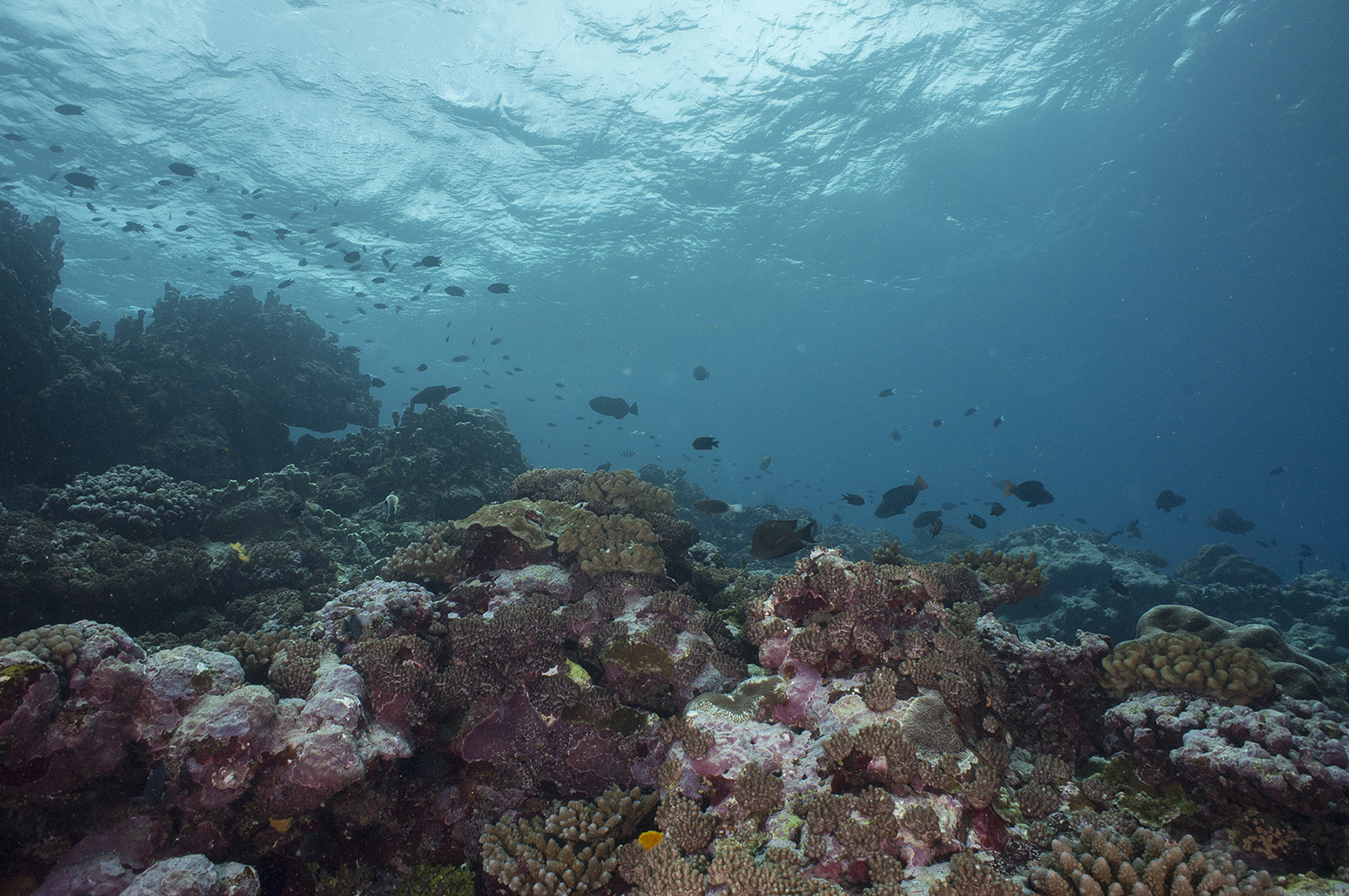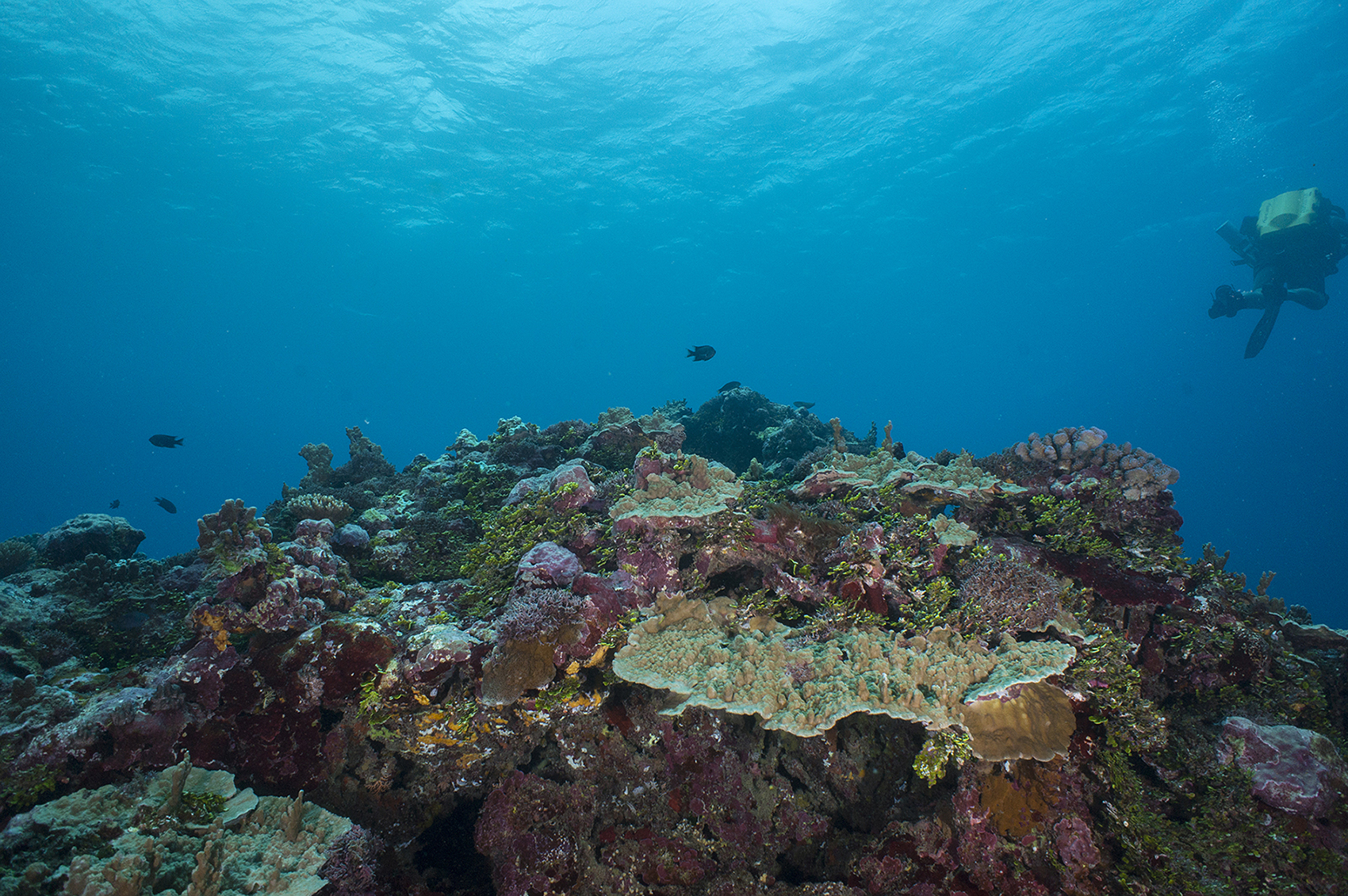For all the unique advantages that SCUBA diving offers researchers, photographers, and recreational ocean-lovers, there certainly are some drawbacks. While limited dive times and the production of fish-frightening bubbles don’t matter to most divers, they can be deal-breaking downsides of traditional SCUBA in certain scenarios. During my first week of diving in the National Park of American Samoa, our dive team was constrained by a strict 12-minute limit in our allowable bottom time while attempting to complete intricate underwater work – spending any longer at depth would needlessly increase our risk of “the bends,” or decompression sickness. Fortunately, my second week in American Samoa was spent completing a much-anticipated Closed Circuit Rebreather course which alleviated much of those constraints and welcomed us into a new realm of SCUBA diving!
Jeff Godfrey, the Diving Safety Officer at the University of Connecticut, met us in American Samoa to teach our Closed Circuit Rebreather course. There are so many differences between rebreathers and traditional, “open circuit” diving, so we definitely had our hands full! Closed circuit divers don’t “lose” air in the form of bubbles when they exhale; instead, the exhaled air returns to a closed breathing loop, where it is then filtered to remove carbon dioxide, enriched with pure oxygen, and guided back into the diver’s lungs. Bizarrely, inhaling and exhaling doesn’t affect diver buoyancy with rebreathers; a “counter-lung” expands to accept air exhaled by the lungs, and it constricts as the lungs reclaim that air during inhalation. Oxygen sensors determine a physiological-ideal amount of oxygen to add at any given depth, which allows divers to absorb less harmful nitrogen and ultimately stay underwater for longer with a decreased risk of getting the bends.
If you’re a bit confused by that description, you’re definitely not alone! Despite completing two days of online training and reading a book on rebreathers, I still felt a bit like I was performing an alien autopsy as Jeff introduced us through the unique parts of rebreathers on our first day of the course. In addition to the counter-lung and oxygen sensors, there are a ton of other parts that aren’t found in open-circuit set-ups; solenoids, heads-up displays, and the elusive dongle were all quickly added to our SCUBA lexicon. Once we established a decent understanding of the new set-up in front of us, we began prepare for our first rebreather dives! The pre-dive process for rebreathers is much more involved than the process we’re all used to. There are many more hoses to manage, more electronics to test, and more cylinders to fill and analyze (there is a “diluent” cylinder that contained air, an oxygen cylinder, and a bailout cylinder that also contained air). With the help of a twenty-item checklist and some pointers from Jeff, we eventually made it out the door.
We began our in-water instruction in fifteen feet of warm, tropical water. It took us all a bit to learn buoyancy control with rebreathers, since open-circuit buoyancy tricks like control of air in lungs do not work with closed breathing loops. I was quickly able to appreciate another novel aspect of closed circuit diving; the experience is almost completely silent, as escaping bubbles and rushing air aren’t part of the process! I didn’t realize how much noise traditional set-ups produced until I dove with a rebreather. It was a bit alarming at first – imagine if all the standard, unnoticed noises of driving in a car were suddenly removed all at once.
After we gained confidence with our buoyancy control, we were able to explore some really cool places with our rebreathers! One of the most incredible dives of this internship took place on a coral-covered sea mount that rose from the depths of the Pacific to a hidden peak at ten feet deep. From the surface, we would have completely missed the submerged pinnacle if the marine team wasn’t already aware of its location. As we dropped to around 100 feet along the nearly-vertical wall of the sea mount, we passed a great diversity of corals and huge schools of fish. At one point, a school of five-foot barracuda swam right up to the group! All in all, I was overjoyed that one of the most interesting physical structures I have ever explored was also teeming with life.
With a freshly-minted certification card in hand, I’m thrilled to continue rebreather diving in the coming days before my return to the continental United States. I owe Jeff a big thank you for his helpful advice throughout the course, and as always thanks to the marine team for letting me join them in their adventures!
